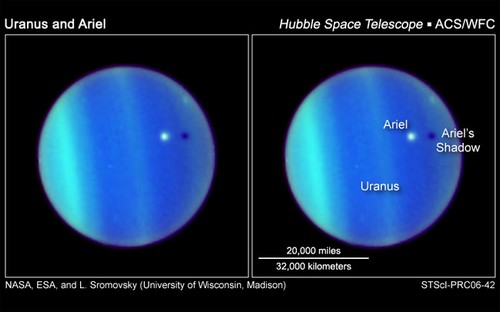Uranus and Ariel
From what I understand, this has never been seen before:
In order for a Uranian transit to occur, the Sun must shine directly over the giant planet's equator; the next time this will happen again is in 2007. The last time such a Uranian equinox occurred was in 1965, but telescopes at the time were not sharp enough to view the transits.
The shadow cast by a moon as it drifted through space above the blue-green cloud tops of Uranus was recently captured for the first time by NASA's Hubble Space Telescope.
To an observer on Uranus, the passage of the planet's icy moon Ariel would have appeared as a solar eclipse and the Sun would be completely blotted out. However, the effect would not be nearly as dramatic as a total eclipse involving Earth and its moon. The Sun appears much smaller on Uranus than on Earth because the giant planet is located much further away. Therefore, a total eclipse involving its moon completely blocks out not only the Sun's body, but also its corona.
